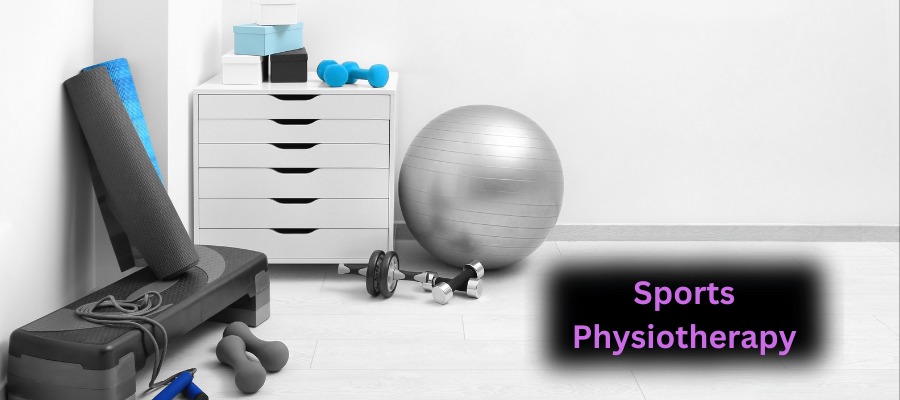Recovery Rhythms: Optimizing Healing with Sports Physiotherapy Techniques
Introduction
Optimizing healing with sports physiotherapy techniques involves establishing appropriate recovery rhythms tailored to individual needs. At Arunalaya HealthCare, we believe that a thoughtful and structured approach is essential for ensuring optimal healing and restoration of function. This includes active rest, targeted exercises, proper nutrition, and sufficient sleep to support tissue repair and reduce inflammation. Additionally, progressive loading and specific modalities like manual therapy, ultrasound, or electrical stimulation can aid in optimizing recovery and promoting tissue regeneration.
Initial Assessment
Comprehensive Evaluation: A sports physiotherapist conducts a thorough examination to assess the injury’s nature, severity, and any underlying factors contributing to the condition.
Medical History: Understanding past injuries, medical conditions, and lifestyle factors helps tailor the rehabilitation plan to individual needs.
Functional Movement Assessment: Analyzing movement patterns and biomechanics helps identify deficits and areas of dysfunction that need to be addressed.
Establishing Goals
Collaborative Goal Setting: Working with the patient to set specific, measurable, achievable, relevant, and time-bound (SMART) goals ensures alignment with their aspirations and expectations.
Short-term and long-term goals: Setting short-term milestones helps track progress, while long-term goals provide motivation and direction throughout the rehabilitation journey.
Rest and Recovery:
Active Rest: Encouraging low-impact activities, such as walking or swimming, promotes blood flow and tissue healing without exacerbating the injury.
Immobilization: In some cases, immobilization with braces, splints, or casts may be necessary to protect the injured area and facilitate healing.
Progressive Loading
Gradual Progression: Incrementally increasing the intensity, duration, and complexity of exercises prevents overload and allows tissues to adapt and strengthen progressively.
Periodization: Structuring the rehabilitation program into distinct phases (e.g., stabilization, strength, power) helps manage workload and optimize adaptation.
Manual Therapy
Soft Tissue Techniques: Massage, myofascial release, and instrument-assisted soft tissue mobilization (IASTM) target muscle tightness, trigger points, and adhesions to improve flexibility and reduce pain.
Joint Mobilizations: Gentle movements applied to the joints help restore normal range of motion and reduce stiffness.
Modalities
Ultrasound: Sound waves generate heat deep within tissues, promoting circulation and accelerating healing.
Electrical Stimulation: Various modalities, such as transcutaneous electrical nerve stimulation (TENS) or neuromuscular electrical stimulation (NMES), can alleviate pain, reduce muscle spasms, and enhance muscle recruitment.
Cryotherapy: Applying cold therapy reduces inflammation, numbs pain, and decreases metabolic demand, aiding in pain management and tissue recovery.
Exercise Prescription
Individualized Programs: Tailoring exercises to address specific deficits, weaknesses, and functional limitations ensures targeted rehabilitation.
Functional Training: Incorporating exercises that mimic real-life movements improves neuromuscular control and enhances performance in daily activities and sports.
Nutrition and Hydration:
Macronutrient Balance: Adequate intake of carbohydrates, proteins, and fats supports energy production, muscle repair, and immune function.
Micronutrient Support: Consuming vitamins, minerals, and antioxidants from a variety of whole foods promotes tissue healing and reduces oxidative stress.
Hydration: Maintaining optimal fluid balance facilitates nutrient transport, waste removal, and cellular function critical for recovery.
Sleep and Stress Management
Sleep Hygiene: Establishing a regular sleep schedule, creating a conducive sleep environment, and practicing relaxation techniques improve sleep quality and duration.
Stress Reduction: Mindfulness meditation, deep breathing exercises, and progressive muscle relaxation techniques alleviate stress and promote relaxation, facilitating recovery.
Monitoring and Adjustments:
Regular Reassessment: Periodic evaluation of progress allows for adjustments to the rehabilitation plan based on evolving needs and responses to treatment.
Communication: Open dialogue between the patient and therapist enables feedback, troubleshooting challenges, and making informed decisions to optimize outcomes.
Conclusion
By integrating these detailed strategies into a comprehensive rehabilitation plan, individuals can maximize their recovery potential and return to optimal function and performance safely and effectively.
At Arunalaya HealthCare, we are committed to providing advanced physiotherapy in Delhi, including physiotherapy for home visits in Patel Nagar and across Delhi. Whether you’re seeking CP treatment, chest physiotherapy near you, or any other specialized care, our team is dedicated to helping you navigate the road to recovery with confidence and support.
physiotherapy for home visit in patel nagar | physiotherapy in pitampura | best physiotherapist in rajender nagar | physiotherapy in naraina | best physiotherapist in inderpuri | physiotherapy center in punjabibagh | physiotherapy in punjabi bagh| physiotherapy in karol bagh | sports injury centre in delhi | sports physiotherapist in patel nagar | sports rehab center in patel nagar | cp treatment | physio clinic near me in delhi | chest physiotherapy near me | advanced physiotherapy in delhi | best sports injury physiotherapist in delhi | best sports injury physiotherapy in delhi | sports physiotherapist in delhi | back pain physiotherapy near me | home visit physiotherapy in delhi | physiotherapy center in delhi | best physiotherapist at home in patel nagar | physiotherapy in patel nagar | physiotherapist in patel nagar

